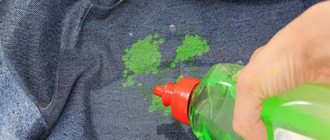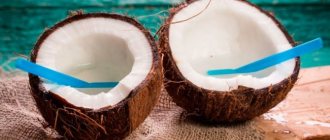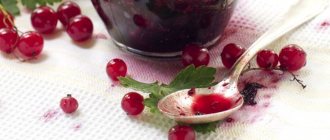The situation when the smell of purchased vodka does not inspire confidence is familiar to many - often the quality of drinks in the budget and mid-price segment leaves much to be desired. The problem can be solved by purifying vodka at home. We will look at simple and really working methods for removing fusel oils. In addition to the cleaning agent itself, you will need: a glass jar, a funnel, cotton wool or a coffee filter.
Attention! The proposed methods can only slightly improve the quality, but it is impossible to get rid of all impurities. Buy vodka only in trusted stores, and at the slightest suspicion of counterfeit, it is better to refuse this drink, since it is difficult to distinguish methyl alcohol from drinking alcohol.
A filter made of cotton wool and a funnel is needed for 5 out of 6 methods
The best ways to purify strong alcohol
There are several proven ways to clean vodka from harmful impurities that it may contain. Let's look at each of them in more detail.
Activated carbon
This adsorbent, familiar to everyone since childhood, is capable of removing all harmful substances from alcohol. To take advantage of its capabilities, prepare a filter. To do this, crumble the coal into small fractions, roll the gauze into several layers and place the resulting black powder between them.
Place the filter in a watering can and pour vodka from one bottle to another. This operation must be repeated three times, changing the portion of the adsorbent each time.
Instead of activated carbon, you can use homemade charcoal. The results of such an event will be slightly worse than in the first technology. Take the purifying raw material at the rate of 50 g for each liter of vodka, place it in a container with alcohol and leave for three weeks. Be sure to shake the container every two to three days. After this period, strain the alcohol through several layers of gauze lined with cotton wool.
Freezing
If you bought a bottle of vodka, but are unsure of its quality, then pour its contents into a plastic bag and put it in the refrigerator. Wait 3-4 hours, then take it out, pierce a small hole and pour the drink from it into another container. Of course, there will be less of it than before freezing, but it will be much cleaner and a little stronger.
There is another method of cold treatment, which is equally accessible at home. Combine vodka with plain water in a 2:3 ratio in a large container and place in the refrigerator. Ice pieces will appear on the surface of the liquid, which contain all the harmful impurities. Remove them as they form and throw them away. When the ice stops appearing, the product is ready for use.
Potassium permangantsovka
Potassium permanganate is a powerful agent for removing fusel oils and other harmful impurities. Don't be afraid to use it at home: it won't harm you. Pour 1 g of the substance into a liter of alcohol and leave the container for 10-12 hours. You will see how a dark sediment will form at the bottom - these are the dangerous elements contained in the vodka. At the end of the procedure, strain the drink through a cotton-gauze filter twice: it will become crystal clear.
Milk
Cleaning with milk is a long-known method of removing harmful impurities. Its mechanism is based on the fact that fusel oils precipitate, which can then be easily filtered. The only negative is that the alcohol becomes a little cloudy after this treatment. However, this shortcoming can also be corrected.
Add milk to alcohol no stronger than 55 degrees at the rate of 100 g per liter. Mix the two liquids, close the container with a lid and place in a dark place for 6-7 days. At first, it is recommended to shake the container several times.
After the specified time has passed, pour the alcohol into another container without disturbing the white sediment that has formed at the bottom. Next, you can proceed in two ways: pass the liquid through a charcoal filter or re-distill the alcohol. The first method leaves the drink a little cloudy, the second allows you to achieve complete transparency.
Egg white
Take the whites from two eggs, shake a little and add to a half-liter container with vodka. This mixture should stand for at least 10 hours, and should be shaken every two to three hours. To complete the process, strain the drink through a cotton-gauze filter.
It is quite possible to clean vodka from fusel oils and other harmful substances at home. There are several methods from which you can choose the most suitable for yourself. The only drawback of all these methods is that their implementation requires a lot of time. Therefore, in order to be in time for the arrival of guests, take care of the issue of filtration in advance.
Freezing
Freezing is an effective way to purify alcohol. This method makes the drink stronger and eliminates cloudy sediment.
Fusel oils have the property of sticking to the walls of the vessel when frozen. The temperature when purifying alcohol should be very low. Wine must be frozen at a temperature of minus 5 degrees, vodka at minus 29 degrees.
Use the freezer and put the bottle in it. After freezing, pour the clean drink into another container. All harmful impurities will remain in the ice crystals.
When freezing, use a bottle that is strong enough so that it does not burst when the liquid expands.
When is it necessary?
Today, the store sells different brands of forty-degree. It is not a fact that all of them are of high quality. Therefore, it is advisable to carry out cleansing. This is necessary for safety, because drinks with harmful impurities are dangerous.
It is recommended to be careful when handling a bottle that has cloudy contents. This indicates that the vodka is of poor quality. These types have a budget cost. In this case, it is necessary to purify the vodka. To ensure a mild hangover, it is better to carry out all cleansing procedures in advance.
General recommendations
Various components are used in the production of vodka from alcohol. There are mandatory:
- good quality ethyl alcohol or medical alcohol;
- drinking water, absolutely clear, soft, not boiled;
- glucose or sugar syrup.
Additional ingredients can change the taste of homemade alcoholic beverage:
- vinegar essence,
- milk,
- honey,
- lemon acid,
- sugar,
- citrus peels,
- black pepper, etc.
Recommendations for making vodka:
The ideal proportion for mixing alcohol with water is 2:3; It is better to mix liquids not by volume, but by weight; adding water to alcohol or vice versa does not matter; to improve taste, you can use various plant materials: herbs, roots, flowers, etc., and infuse vodka on them for a month; To soften the taste, sugar syrup or glucose is added to vodka.
Step by step recipe
The main thing here is not only to dilute alcohol with water in the correct proportions. All stages of making homemade vodka are important. Let's consider all stages of preparation. Use only good quality ethyl alcohol.
Stage one: water. It needs to be properly prepared. Of course, spring water is considered ideal for making vodka. It has been used by folk craftsmen for a long time. But in a modern city it is difficult to find such water. Therefore, we will use the one we can get.
It is advisable to purchase bottled table water for this occasion. The salt content in it should be minimal. Do not take distilled or boiled water: this is dead water, having lost all its benefits during processing. In addition, alcohol does not dissolve well in boiled water.
Stage two: alcohol. Ethyl alcohol is ideal. But you can also take a medical one, which contains a minimal amount of various impurities. Using a simple device - a hydrometer - check the alcohol strength. The proportions of its mixing with water depend on this.
Stage three: remaining products. In addition to alcohol and water, you will need glucose or sugar from which it can be made. If desired, you can add lemon, honey or other natural flavors to the vodka.
The glucose solution is made like this: mix a kilogram of sugar and a liter of water (any). Boil the mixture over low heat until foam stops appearing (which we constantly skim off before this).
Stage four: preparation. Now you need to determine how to dilute alcohol to vodka. You will need the alcohol strength that you have already determined. To get 3 liters of vodka with a strength of 40 degrees, the number of components (at an alcohol strength of 96 degrees) will be as follows:
- alcohol - 1250 ml;
- glucose – 40 ml;
- water - until you get a full three-liter jar.
40-proof vodka is considered optimal.
In such a drink, all substances will dissolve completely. It is worth noting that when mixing half a liter of water and the same amount of alcohol, you will not get a liter of vodka. During cooking, a chemical reaction occurs, as a result of which the volume of the liquid decreases slightly.
So, you have calculated how much water you need to add to the amount of alcohol you have. What is the correct way to add alcohol to water or vice versa? Opinions differ here
Conclusion - it's not that important!
Pour water into a jar or bottle. Add a small amount of glucose to taste. It will significantly soften the taste of vodka. You can add other products: honey, spices, citrus peels, etc. Stir the contents of the container.
Stage five: purification of vodka. There are many options for purifying alcohol. We described them in detail when we gave a recipe for cognac made from moonshine. Here's one way:
- add a few tablets of activated carbon to the prepared vodka;
- shake the drink;
- leave for a couple of hours (not in the refrigerator);
- Strain the vodka through gauze discs or thick cloth.
You learned how to make vodka from alcohol. All that remains is to pour it into bottles, let it sit for about a week, and store it tightly sealed. This will prevent the vodka from turning into vinegar due to oxidation.
What else can you do?
In addition to ridding vodka, alcohol or moonshine of all impurities at home, you can slightly improve the taste and aroma of the drinks. Your guests will definitely love what you offer them.
For example, after cleaning, you can crumble 50–70 grams of violet root into the liquid and add some raisins. It is enough to leave the container in this form overnight, and in the morning you will have a drink with a subtle pleasant aroma and an interesting taste. You can also add honey, various aromatic herbs, orange and lemon peels, cinnamon sticks and the like to alcohol. This will not require much expense or effort from you, and you can easily surprise your friends with an exquisite drink. And only you will know what it was made of.
Alcohol purification
It is no secret that low-quality alcohol causes many illnesses and even deaths of people. But alcohol is quite often used for medicinal purposes, including oral administration in the form of pepper and various tinctures. In addition, alcohol is used for external use (disinfection of wounds, cauterization, etc.), thus harmful substances contained in low-quality alcohol can penetrate the human body through the skin
Therefore, it is very important that the alcohol used is free of toxic substances and harmful impurities.
However, despite all the measures taken to purify the alcohol during production (during the preparation of the mash, during fermentation and during distillation), it is still impossible to obtain a pure product. This also applies to wine.
To purify alcoholic beverages, it is recommended to use filters containing activated carbon. It not only cleans the drink, but also eliminates unpleasant odors and improves taste. In addition, the wine brightens, getting rid of color absorbed from outside.
In Russian distillation, coal for filtration began to be used a long time ago. In 1785, the St. Petersburg pharmacist T. E. Lovitz, who later became an academician, was the first to discover the purifying ability of coal during the distillation of alcohol. In his experiments, Lovitz distilled alcohol over coal powder and at the same time obtained a purer product than with conventional distillation. The same scientist discovered that simply shaking wine without heating or rectification improves the taste and color of the drink and eliminates unpleasant odors.
In addition, the following discovery was made: filtration through carbon can be effectively carried out by first diluting the alcohol with cold boiled water to 40% or after the first distillation, when the proportion of alcohol contained does not exceed 45%. Good results are justified by the fact that the higher the concentration of alcohol, the stronger it retains impurities and, accordingly, the more difficult it is to purify
During this process, it is important to keep the temperature of the alcohol as low as possible. Soon this discovery began to be used in wineries
As a result, the quality of the wines has improved significantly.
As mentioned above, you can make an activated carbon filter yourself. In this case, you can use either activated carbon, purchased directly from a pharmacy, or homemade carbon, made from wood.
In the latter case, by selecting certain tree species, it is possible to obtain alcohol with different taste qualities that are not available from any other manufacturer.
To make a filter at home, you need to take a pan of a suitable size with a hole made in the bottom. Place a thin layer of cotton wool and a piece of gauze on the bottom of the pan. Activated carbon is poured on top of the gauze at the rate of 50 g per 1 liter of alcohol intended for filtration. The coal is covered with the edges of gauze so that it does not float to the surface. After this, you can pour alcohol into the prepared container.
It should be remembered that different types of wood have different adsorbing properties, that is, the composition of the substances they absorb varies to some extent. This is the reason for the taste and quality differences between wines purified with different filters.
To clean the alcohol as best as possible, it is recommended to pass it through a similar filter 2-3 times. The finer the powder, the denser the filter will be, and the filtration process itself will be slower, but the alcohol passed through the filter will be better purified.
Another way to purify alcohol is to pour activated carbon into a container with alcohol at the rate of 50 g per 1 liter and shake the resulting mixture well. It is recommended to do this shaking several times during the day. After this, the alcohol, together with activated carbon, is infused for about a week, after which it is filtered through gauze or filter paper.
Purifying alcohol at home gives very good results.
Fermentation of feedstock
The substances that make up the mash can be divided into 2 main groups: soluble
and
insoluble e
. Insoluble substances include suspensions of various types (pits, husks, etc.).
We are interested in the group of soluble substances
, namely
volatile compounds
. During distillation, these substances are transformed into raw alcohol and the finished product. These include: water, alcohols, organic acids, esters, aldehydes, fusel oil, etc. In total, there are up to 100 volatile substances that make up the mash.
Let's look at the main ones, diving a little into chemistry.
Why salt and soda?
It is known that soda and salt are natural antiseptics that can be used without any fear to cleanse many liquids from harmful impurities. As for soda, it neutralizes acids, namely acetic acid, which, even in minimal quantities, is present in moonshine. Salt is a natural antiseptic that neutralizes the effects of toxic substances present in moonshine. That is, by purifying alcohol with soda taken together with salt, you can achieve an excellent effect in removing toxic impurities.
First, it should be noted that moonshine can be cleaned with soda alone, that is, without combining it with salt.
- First, the strength of the moonshine should be reduced to 40-50 degrees.
- For a liter of moonshine, you need to take 10 grams of soda, having previously dissolved it in 100 milliliters of purified water.
- The alkaline solution is poured into a container with moonshine. Then the can with the drink is sealed and shaken thoroughly. After this, the moonshine needs to sit for 50 minutes.
- After the specified time has passed, the bottle of moonshine is shaken again, after which it is left to settle for 14 hours. After this, the moonshine is filtered through cotton wool, folded in half. To enhance the filtration effect, you can put powdered activated carbon on cotton wool.
You can also use soda together with potassium permanganate, since this cleaning method will remove acid impurities in alcohol, as well as fusel oils. How to use this method:
- First of all, you should take potassium permanganate and dilute it in a glass of water. For a glass of liquid you should take 1.5 grams of potassium permanganate; this portion of the cleanser is enough for a liter of moonshine.
- After this, you should begin making a soda solution, and this should be done as indicated in the previous recipe.
- First, pour a solution of baking soda into the bottle of moonshine, and then a solution of potassium permanganate.
- Moonshine with soda and potassium permanganate should be left for 40 minutes.
- At this stage, you should take caustic soda and dilute it with water in equal proportions, but so that for every liter of moonshine there are 2 grams of caustic soda.
- After this, the moonshine should be closed with a lid and placed in a dark place for 12-14 hours. Once this period of time has passed, a sediment will form at the bottom of the jar.
- The purification of moonshine should be completed by filtering it through cotton wool and crushed coal.
What can be dangerous about unrefined vodka?
Fusel oils, in their high concentrations, cause significant and sometimes irreparable harm to the entire body, the main blow being to the liver. The worst option is vodka, which consists partly or entirely of methyl alcohol, a strong neurovascular poison. The main impurities include butyl, propyl and amyl alcohols, vinegar and acetaldehyde.
- Propyl alcohols can cause complications such as ulcerative gastritis, digestive tract upset, hypertension, renal failure and bradycardia. The degree of intoxication from them is stronger, due to which a person can lose consciousness at any moment, which will lead to unpredictable consequences depending on the circumstances, falling into a coma, death is also possible. The lethal dose ranges from 100 to 300 ml.
- Amyl alcohols make up the majority of fusel oils - 65-85%. They are highly toxic, the lethal dose ranges from 10 to 50 ml. In addition, substances in this group increase the toxicity of ethanol, which is why its lethal dose is reduced from 500 ml to 150-200. Ingestion of even a small amount of them causes headache, dizziness, nausea and pain in the gastrointestinal tract, and drowsiness.
- Butyl alcohols taste and smell similar to ethanol, and are often formed with accompanying toxic impurities: crotonyl alcohol, butyraldehyde and crotonyldehyde. When butyl alcohol enters the body, headache, weakness, nausea, vomiting, pain in the gastrointestinal tract and lumbar region develop. The lethal dose when taken orally is 200 ml, death occurs within 1.5-2 days.
- Acetaldehyde, or acetaldehyde, when in excess in the body, and this is what happens when drinking alcohol, has a negative effect on all organs. In particular, it affects protein compounds, the immune system, disrupts the transport of amino acids, and is a carcinogen, that is, it leads to extensive poisoning with metabolic disorders.
Methods for purifying moonshine at home
Home winemakers claim that purifying moonshine or vodka using charcoal and activated carbon is the fastest and most reliable. Coal perfectly absorbs unpleasant odors and absorbs harmful impurities.
Vodka purification. You will need activated carbon, Enterogel or birch charcoal (it gives the best results). Pour into a saucepan, finely crush and add alcohol at the rate of 50 grams per 1 liter.
This mixture is infused for 7 days and needs to be stirred periodically. The drink is then filtered. To improve the result, this procedure can be carried out several times, replacing the coal with fresh one.
Two ways to clean moonshine:
- During the first distillation of moonshine, a funnel is used to drain the moonshine into a jar. You need to place a cotton pad in layers, small fractions of coal, then larger ones and cover with several cotton pads.
- Pour coal into a container with moonshine at the rate of 50 grams per 1 liter of liquid and let stand for 7-14 days, then strain through cheesecloth and cotton wool.
These two methods are excellent options for cleaning moonshine before re-distilling.
How to properly purify vodka or moonshine with potassium permanganate
The well-known potassium permanganate quickly and efficiently purifies both moonshine and vodka. You need to take 3 grams of potassium permanganate and dilute it in 300 grams of warm water to make the solution homogeneous.
Next, add a spoonful of baking soda and a spoonful of salt to the solution. Then the mixture is poured into 3 liters of alcohol and left for 12 hours. The drink should lighten and give sediment. The settled moonshine or alcohol must be filtered through a layer of cotton wool.
Technological process for producing double moonshine
Stage one: dilution with water
First, you need to distill the mash in the usual way, and the temperature of the liquid during this procedure should be 100°C. In order to carry out the second distillation of moonshine, the drink must be diluted with clean spring water. Cold purified water should be poured into the intoxicating liquid until the strength of the mash reaches 20-30%. To prevent the drink from becoming cloudy, it is recommended to pour alcohol into water, and not vice versa. Distillation with a higher concentration of alcohol vapor is dangerous due to the fact that the moonshine still may catch fire. In addition, stronger moonshine has a much stronger molecular connection with fusel impurities and harmful substances, in this case the recipe for secondary distillation of moonshine will be less effective and will not bring the desired result.
Stage two: cleaning
Before you start re-distilling grain or sugar moonshine at home, you must do some cleaning. The procedure is carried out using potassium permanganate, baking soda, milk, activated carbon and any other adsorbent substance convenient for you.
The most common and classic recipe for this is to make. We will need manganese powder in an amount of 3 grams per 300 ml of water, the temperature of which is more than 40°C. The diluted solution is added in proportion to 1 liter of moonshine. The resulting mixture should be mixed thoroughly and left for 30 minutes. Next, the recipe calls for adding 1 tablespoon each of baking soda and table salt. Then mix the contents again and let stand for two hours. After rectification has passed, the liquid is separated using a water filter or a cotton-gauze funnel.
Stage three: fractional distillation
The first thing you need to do before the final stage is to double-check the strength of the drink. To prevent the high temperature that occurs during distillation from causing a fire, the strength should be 20 degrees. Fractional distillation is carried out using a steamer, and the liquid output must be divided into fractions: “head”, “body” and “tail”. The exit temperature of the first 8-10% of the mash is 75°C, and this harmful fraction is prohibited for consumption, since it consists of fusel oils and other low-quality impurities. To obtain the second fraction, the temperature of the mash rises to 95°C, and the amount of the drink is 80% of the total liquid and is double moonshine, that is, the drink that we wanted to get. This part must be collected until the strength drops to 45%. The exit temperature of the third and final fraction rises to 100°C; the liquid is recommended for increasing the strength of future moonshine, but it should not be consumed.
As a result, the second distillation yields about 60-70% crystal clear drink without foreign impurities and unpleasant odors. All you have to do is dilute it to a suitable strength and the drink is ready to drink.
Purifying moonshine by distillation is more effective than any other method, as it allows you to get rid of the maximum volume of fusel oils. Double or even triple distillation allows you to obtain the purest possible product even without intermediate purification, but this will not be superfluous. In many ways, the quality of the final product will depend not only on the raw materials and the number of distillations, but also on their correctness, and the main thing here is the ability to select the necessary alcohol fractions. The problem is that in addition to ethyl alcohol, the mash contains a lot of other alcohols and acids, other unnecessary impurities, each of which boils at a certain temperature, and it is not so easy to track the temperature of the mash and evaporation during distillation.
With modern factory-made moonshine stills, the situation is simpler - they are often supplied complete with special thermometers built into the distillation cubes. In other modifications, a niche for a thermometer is provided directly in the distillation column. But what about those who distill moonshine “blindly”? Personally, for example, for distillation I use a 40-liter aluminum flask, a copper coil and a non-flowing condensation container. To help you can find an alcohol meter, which you can buy almost everywhere, as well as the basics of chemistry and mathematics.
Advantages and benefits of cleaning moonshine with soda
Soda is a safe substance that not only cleans moonshine from fusel oils, but also makes it softer and improves drinking properties. The substance reacts with acids contained in homemade alcohol, causing harmful substances to precipitate.
Of course, sodium bicarbonate cannot make homemade alcohol similar in properties to medical alcohol, but the benefits of alcohol increase several times compared to raw alcohol.
Safety
When choosing a method for purifying moonshine from harmful impurities, health safety is taken into account. Sodium bicarbonate is considered just such a substance. The fact is that it is added in small quantities that will not cause harm to the body.
Sodium bicarbonate does not remain in the moonshine, it all ends up in sediment. This is what makes it possible to improve raw alcohol and add beneficial properties to it.
Availability
All the ingredients necessary to remove harmful substances from moonshine are affordable and are always available in stores or pharmacies. So, getting a healthy alcoholic drink for moonshiners is cheap. But the result is obvious: alcohol is purified from harmful impurities and unpleasant odors.
Compatibility
Baking soda can be used as the main means for cleaning raw alcohol. It is also used in combination with the following ingredients:
- table salt;
- citric acid;
- potassium permanganate;
- soda ash.
Preservation of color, taste and strength
After purification with bicarbonate, the raw alcohol will be transparent, the properties and strength of the drink will not change. If desired, you can tint homemade alcohol to make it tastier and more aromatic:
- when adding tea or pine nuts, the purified drink is difficult to distinguish from cognac;
- adding parsley and mint leaves, you get moonshine with a greenish tint;
- A lemon peel will give homemade alcohol a yellow color;
- adding orange peel or walnut partitions, you can get an orange drink;
- if you need moonshine with a bluish tint, just add yarrow flowers.
Minimum time spent
It should be noted that the main time costs are incurred in obtaining raw alcohol. Filtration of moonshine with soda occurs quickly, since the soda does all the work itself. A person spends time filtering and pouring the drink into bottles.
conclusions
Regarding the purification of distillates, some conclusions can be drawn:
- Known purification methods are mainly aimed at reducing the concentration of fusel oil in the finished product. Using modern equipment for home distillation, the user fully achieves high purification of the product from fusel oil, so there is no special need for alcohol processing if the correct beverage production methods are followed.
- Methods aimed at imparting characteristic taste parameters (charring) have their place. Without their use, it is impossible to achieve the classic organoleptic characteristics characteristic of the drink. It is important to observe dosages during processing and use each method only for specific categories of drinks.
- The most important thing when trying to get a high-quality drink with a minimum content of harmful impurities is to fight not the consequences, but the predecessors. First of all, it is necessary to monitor the fermentation conditions, select the right microorganisms and carry out high-quality separation of the product into fractions.
What is raw alcohol
Moonshine, which is the result of the first distillation and contains, in addition to ethyl alcohol, a set of dangerous impurities formed as a result of the activity of yeast products, is called raw alcohol.
Ethyl alcohol is obtained from mash by fractional distillation. The basis of this process is the evaporation of liquid, accompanied by condensation of steam. This is achieved in two main ways:
- Distillation, which in Latin means “drop by drop,” this method involves distilling a liquid to purify it;
- Rectification, which means straightening in Latin, is a more thorough method of purification by dividing liquid into fractions.
Most often in moonshine, “distillation” and “distillation” are equivalent terms. They characterize the phenomenon during which raw alcohol is formed as the final product. One of the goals of the fractional distillation method is to reduce negative elements as much as possible. Rectification is a more thorough purification of raw alcohol from harmful components, accompanied by the production of a rectified product.
Raw alcohol is the main product that plays a role in subsequent manipulations with alcohol.
Ethers
They have various pleasant aromas and are often used in perfumery and confectionery production. They are divided into simple and complex.
Ethers
These include: diethyl ether and acetals. Acetals are formed by the reaction between aldehydes and alcohols. For example, acetaldehyde + ethyl alcohol => diethylacetal.
Esters
Formed by the interaction of alcohols and organic acids (esterification reaction). For example, ethyl alcohol + acetic acid => ethyl acetate, has a pleasant fruity aroma. In addition to being formed during fermentation and distillation, esters can be added with the feedstock. For example, fruit and berry raw materials are very rich in esters.
Berry liqueurs
Most often, liqueurs are infused with berries. For this purpose, almost any seasonal crops are used:
Raspberries. Good for both strong drinks and sweeter and lighter ones (ladies). This berry gives the vodka an intense ruby color, giving it a rich aroma and interesting flavor notes. Raspberries collected in the forest are ideal for this purpose; they are smaller than cultivated ones, but have a unique smell. Used for mono tinctures or in combination with other components. Cherry
It is important to choose the right variety. It is best to select berries for infusions that are fleshy, juicy, have a bright color and have a sweet and sour taste.
Before infusing vodka with cherries, it is recommended to freeze the berries, this way they will release more juice, which means the final product will be more tasty. To give the tincture an unusual caramel flavor, the berries are slightly dried in the oven. Gooseberry. Choose ripe or slightly greenish berries; if you take overripe ones, mold may appear in the drink or the taste of the drink will simply deteriorate. Since gooseberries can hardly be called juicy, they require special preparation. The berries are passed through a meat grinder and the mixture is allowed to settle for a day or two in the refrigerator. It is advisable to choose a red or yellow variety for this purpose. Rowan. To prevent rowan from giving off an unpleasant bitterness in the drink, it must be frozen before adding to vodka. The chokeberry variety is sweeter. They both pair beautifully with red and black currants. The juice of these berries goes well in cocktails with mountain ash.
Please note that berry juice will dilute the vodka and reduce its strength. If you want to get exactly the classic version with 40% alcohol content, you should make the base a little stronger. Liqueurs that are too sweet are difficult to drink, and they also tend to produce heavy and sudden intoxication.
Aldehydes
In the mash and distillation products, they are represented by oxidized alcohols. Oxidation of alcohols can occur during storage, processing or distillation. Aldehydes are intensively formed upon contact with copper elements during the distillation process. The mash mainly contains acetaldehyde, furfural, and acrolein.
Acetaldehyde
when dissolved in water it gives a pleasant fruity aroma.
Acrolein
has an unpleasant suffocating odor and is formed during the thermal decomposition of fats.
Furfural
has a pleasant rye bread aroma and is formed from ribose nucleic acid, released during yeast autolysis (death). Refers to potent poisons. Its content in strong drinks is strictly regulated.
Almost all aldehydes in large quantities impart bitterness to the drink.











